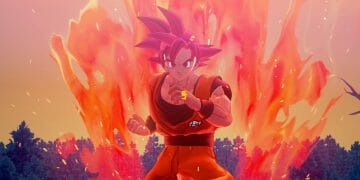Anime, with its vibrant characters and imaginative settings, becomes a massive source of inspiration for aspiring artists. Whether you’re sketching in your notebook during a lecture or brainstorming for your next big art project, the diverse styles and themes found in anime can spark a burst of creativity.
From the whimsical landscapes of Studio Ghibli to the dynamic action sequences of shonen anime, there’s an endless array of elements to explore and incorporate into your personal projects. We know it might be difficult for students to carve out a few extra hours for personal art. Yet, if you ask an expert writer to write college essay for me, you can easily watch new episodes of your favorite anime and get a creativity boost for your own work. Let us show you how you can use anime to elevate your artistic expression!

Table of Contents
ToggleCapturing the Essence of Anime Characters in Your Sketches
Anime characters are not just drawings; they embody emotions, stories, and a unique style. As an artist, you can learn a lot by observing how anime characters express emotions through exaggerated facial expressions and body language. Try sketching your favorite character in different emotional states. Notice how a slight change in the eyes or mouth can convey a whole new feeling.
Another aspect to explore is the dynamic poses that are a staple in anime. These poses are often exaggerated, but they capture movement and energy beautifully. Practice by pausing a scene and trying to replicate the pose. Pay attention to how the clothing drapes and the hair flows, adding a sense of motion to your sketches. This exercise is great for understanding anatomy and movement, which are critical skills for any aspiring artist.
Integrating Anime Scenery into Your Landscapes
Anime is renowned for its breathtaking landscapes, from serene countryside scenes to futuristic cityscapes. Start by observing the color palettes: anime often uses a harmonious blend of colors that evoke specific moods. You can experiment with these palettes in your work, seeing how they change the feel of your landscapes.
- Lighting and Shadow: Notice how anime uses light to create depth and atmosphere.
- Perspective: Look at how different angles are used to create dynamic scenes.
- Color Gradients: See how subtle color shifts are used for sky, water, and other elements.
- Detailing: Pay attention to the level of detail in buildings, trees, and other background elements.
- Contrast: Observe how contrast is used to highlight key areas of a scene.
- Atmospheric Effects: Look at how elements like fog, rain, or sunlight are depicted.
- Texture: Notice the textures used for natural and man-made objects.
Learning from Anime Storytelling for Visual Narratives
As an artist, you can learn how to tell stories through your art by studying how anime develops its narratives. Observe how background elements, character positioning, and even color schemes contribute to the story. For instance, a change in color might foreshadow a plot twist.
In your projects, think about the story you want to tell. Even a single image can narrate a tale. Imagine creating a series of drawings that, when put together, unfold a story without using a single word. This exercise improves your artistic skills and enhances your ability to communicate visually.
Anime-Inspired Color Theory and Technique
The use of color in anime ranges from bold and vivid to soft and subtle, making it a fantastic study for artists. Pay attention to how colors are used to set the mood of a scene or reflect a character’s personality. For example, warm colors might be used in a joyful scene, while cooler tones might be present in somber moments.
In your art, experiment with these color theories. If you’re working on a digital piece, play around with layering and blending modes to mimic the depth and vibrancy seen in anime. For traditional artists, mixing different mediums like watercolor and colored pencils can achieve a similar effect. This exploration of color can significantly enhance the emotional impact of your artwork.
Embracing the Anime Style in Fashion Design
The unique and often over-the-top styles seen in anime characters’ clothing can inspire your fashion sketches. Notice how each character’s outfit often reflects their personality, from the rugged, practical clothes of an adventurer to the elegant, detailed attire of a noble.
- Character Archetypes: Study how different character types (like the hero, villain, or sidekick) dress.
- Fabric Movement: Observe how clothes move and flow in different situations.
- Accessories: Pay attention to how accessories are used to complement an outfit.
- Hairstyles: Notice how hairstyles are an integral part of a character’s overall look.
- Outfit Details: Look at the intricacies in the clothing designs, including patterns and layering.
- Color Schemes: See how color schemes in outfits contribute to the overall character design.
- Cultural Influences: Take note of the cultural influences in the clothing styles.

Anime’s Influence on Concept Art and Illustration
For those interested in concept art or illustration, anime offers an abundance of styles and themes to explore. Look at the way different genres of anime handle character and environment design. For example, a fantasy anime will have different design elements compared to a sci-fi or slice-of-life anime.
In your concept art, try adopting these varying styles. If you’re working on a fantasy piece, look at how anime depicts mythical creatures and landscapes. For a sci-fi project, observe the futuristic designs and technological elements. This practice will broaden your artistic range and inspire you to create more original and diverse works.
Wrapping Up
Anime can enrich your art in myriad ways. Whether it’s through character design, storytelling, or color theory, its influence can bring a new dimension to your work. When academic pressures mount, and you wish for more hours in the day, remember resources like the best paper writing service can provide that extra support. Together with professional writers, you can research storytelling techniques or simply delegate those boring essays and work on your artistic style. The key is to keep experimenting. Your journey as a student artist, fueled by the dynamic world of anime, is bound to be as colorful and exciting as the art form itself.






